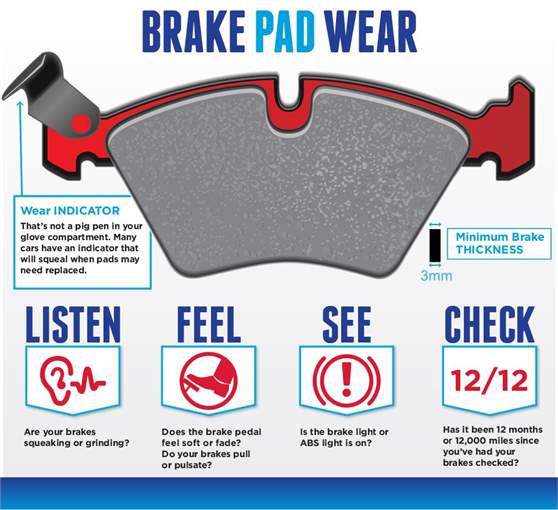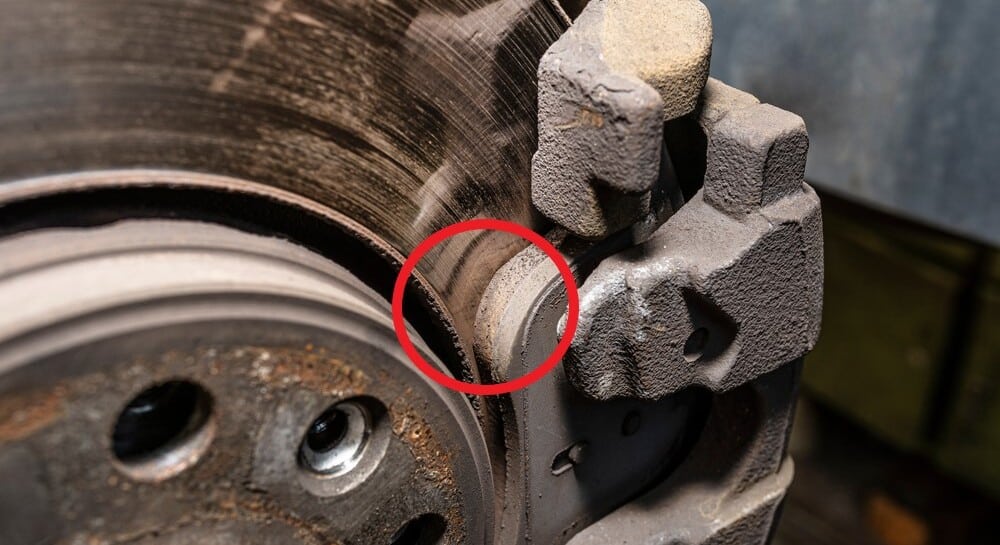Why Regular Brake Pad Checks are Crucial
Brake pads are a critical safety component of any vehicle, and regular checks are essential to ensure they are functioning properly. Failing to check brake pads can lead to worn-out pads, which can cause brake failure, accidents, and even fatalities. In fact, the National Highway Traffic Safety Administration estimates that brake-related problems are a leading cause of vehicle crashes. By learning how to check brake pads, vehicle owners can identify potential issues before they become major problems, saving lives and reducing the risk of accidents. Regular brake pad checks can also help prevent premature wear on other brake components, such as rotors and calipers, reducing the overall cost of brake repairs. Moreover, proactive brake pad maintenance can provide peace of mind, knowing that your vehicle is safe to drive.
Identifying the Signs of Worn-Out Brake Pads
Worn-out brake pads can exhibit several warning signs, and being aware of these signs is crucial to ensuring your safety on the road. One of the most common signs of worn-out brake pads is a squealing or grinding noise when applying the brakes. This noise is usually caused by the brake pad wear indicator, which is a small metal tab that rubs against the brake rotor when the pads are worn down. Another sign of worn-out brake pads is a spongy brake pedal, which can indicate air in the brake system or worn-out brake pads. Vibrations when braking are also a common sign of worn-out brake pads, as they can cause the brake rotor to warp or become uneven. Additionally, if the brake pads are excessively worn, the vehicle may pull to one side when braking, or the brakes may take longer to stop the vehicle. By being aware of these signs, vehicle owners can take proactive steps to check their brake pads and replace them if necessary, ensuring their safety on the road.
How to Visually Inspect Your Brake Pads
Visually inspecting brake pads is a crucial step in maintaining their health and ensuring your safety on the road. To start, locate the brake pads by looking for the brake caliper, which is usually located near the wheel hub. Once you’ve found the brake caliper, look for the brake pads, which are typically held in place by clips or springs. Next, visually inspect the brake pads for signs of wear, such as excessive wear on the surface, uneven wear, or cracks. Measure the thickness of the brake pads using a micrometer or a brake pad wear gauge, and compare it to the manufacturer’s recommended minimum thickness. If the brake pads are worn down to the minimum thickness or show signs of excessive wear, it’s time to replace them. Additionally, check the brake pad wear sensors, which are usually located on the brake pad or brake rotor, to ensure they are functioning properly. By following these steps, you can learn how to check brake pads and identify potential issues before they become major problems.
Using Brake Pad Wear Sensors and Other Tools
Brake pad wear sensors and other tools can be valuable assets in detecting worn-out brake pads. Brake pad wear sensors are electronic devices that are usually integrated into the brake pad or brake rotor and are designed to alert the driver when the brake pads are worn down to a certain thickness. These sensors can be especially useful for drivers who may not be aware of the signs of worn-out brake pads or who may not regularly inspect their brake pads. Other tools, such as brake pad wear gauges and micrometers, can also be used to measure the thickness of the brake pads and detect wear. Additionally, some modern vehicles come equipped with advanced brake pad monitoring systems that can detect worn-out brake pads and alert the driver through a dashboard warning light. By using these tools and sensors, drivers can stay on top of their brake pad maintenance and ensure their safety on the road. For example, by learning how to check brake pads using these tools, drivers can identify potential issues before they become major problems. Furthermore, these tools can also help drivers to extend the life of their brake pads by detecting wear early on and allowing for prompt replacement.
What to Do If You Find Worn-Out Brake Pads
If you’ve discovered worn-out brake pads during your inspection, it’s essential to take prompt action to ensure your safety on the road. The first step is to replace the worn-out brake pads with new ones. When choosing replacement brake pads, make sure to select ones that are compatible with your vehicle’s make and model. It’s also crucial to follow the manufacturer’s instructions for installation and to ensure that the new brake pads are properly bedded in. Bedding in new brake pads involves driving carefully for a certain distance to allow the pads to wear in evenly and ensure proper braking performance. Additionally, it’s a good idea to have your brake fluid levels checked and topped off as needed, as worn-out brake pads can sometimes be a sign of a larger brake system issue. By taking these steps, you can ensure that your vehicle is safe to drive and that you’re not putting yourself or others at risk. Remember, learning how to check brake pads is only half the battle – knowing what to do if you find worn-out brake pads is just as important.
Tips for Extending the Life of Your Brake Pads
To get the most out of your brake pads, it’s essential to adopt good driving habits and perform regular maintenance. One of the most effective ways to extend the life of your brake pads is to drive smoothly. Avoid sudden stops and rapid acceleration, as these can cause excessive wear on your brake pads. Additionally, try to avoid riding your brakes, as this can cause them to overheat and wear down more quickly. Another crucial aspect of brake pad maintenance is ensuring proper brake fluid levels. Low brake fluid levels can cause your brake pads to wear down more quickly, so make sure to check your brake fluid levels regularly and top them off as needed. By following these tips and learning how to check brake pads regularly, you can help extend the life of your brake pads and ensure your safety on the road. Furthermore, regular brake pad checks can also help you identify potential issues before they become major problems, saving you time and money in the long run.
When to Seek Professional Help
While regular brake pad checks and maintenance can help identify and address many brake-related issues, there are times when it’s necessary to seek professional help. If you’re not comfortable inspecting or replacing your brake pads yourself, it’s always best to consult a trusted mechanic. Additionally, if you notice any of the following signs, it’s a good idea to seek professional help: a spongy brake pedal that doesn’t firm up even after pumping, a brake pedal that travels all the way to the floor, or a vehicle that pulls to one side when braking. These signs can indicate more serious brake problems that require the expertise of a professional mechanic. When seeking professional help, look for a mechanic who is experienced in brake repair and maintenance. Ask questions about their experience and qualifications, and don’t be afraid to ask for a second opinion if you’re unsure about the diagnosis or recommended repairs. By knowing when to seek professional help, you can ensure that your brake system is properly maintained and repaired, and that you’re safe on the road. Remember, learning how to check brake pads is an important part of brake maintenance, but it’s also important to know when to seek help from a professional.
Conclusion: Stay Safe on the Road with Regular Brake Pad Checks
In conclusion, regular brake pad checks are a crucial aspect of vehicle maintenance that should not be overlooked. By understanding the importance of brake pad maintenance, identifying the signs of worn-out brake pads, and learning how to check brake pads, vehicle owners can ensure their safety on the road. Additionally, by following the tips and advice outlined in this guide, vehicle owners can extend the life of their brake pads and avoid costly repairs. Remember, brake pad maintenance is a simple and effective way to prevent brake failure and ensure a safe driving experience. Make it a habit to check your brake pads regularly and stay safe on the road. By incorporating regular brake pad checks into your vehicle maintenance routine, you can have peace of mind knowing that your vehicle is in good working condition and that you’re doing everything possible to prevent brake-related accidents. So, take the first step today and learn how to check brake pads to ensure your safety on the road.






